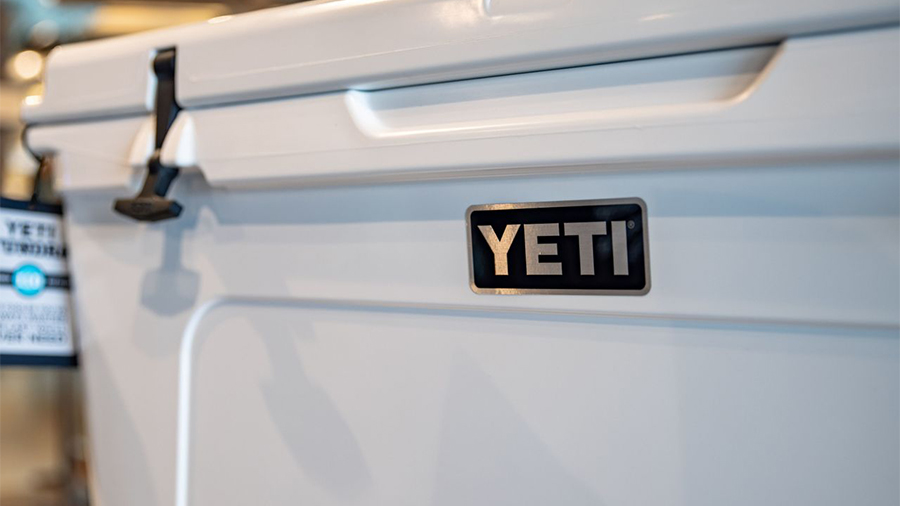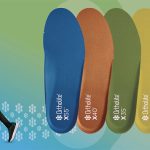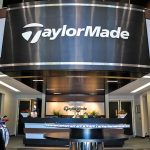Yeti, Inc. reported sales and profits in the fourth quarter that surpassed analyst targets on demand for both its drinkware and coolers while predicting another year of strong growth in 2022. However, management cautioned that supply chain pressures would impact sales in the first part of the year. Gross margins are also expected to be weighed down by higher underlying costs.
On a conference call with analysts, Matt Reintjes, president and CEO, said Yeti’s fourth-quarter sales gain of 18 percent came in above the company’s outlook, driven by strong demand across channels.
“Profitability was also better than planned as we continue to effectively manage the business in a dynamic cost environment by finding the right balance between investment against cost pressure,” said Reintjes. “Overall, we believe this performance reflects what would be considered a tremendous growth story in any environment, let alone one that has included two years of a pandemic, pervasive supply chain disruption and the emergence of significant cost pressure.”
Reintjes stressed Yeti is seeing broad strength for its products.
“We have a growing database of new and existing customers that are exhibiting high repeat purchase rates and strengthening AOV, driving our customer lifetime value,” said Reintjes. “Building upon this trend, our focus remains on continued product innovation, balanced with awareness of the existing portfolio, ongoing inventory replenishment to ensure optimal customer experiences, and application of rapidly expanding analytical intelligence to drive acquisition, conversion and retention.”
Reintjes said Yeti’s confidence going into its fifth year as a public company is reflected in its preliminary 2022 sales outlook that calls for 18 percent to 20 percent growth, ahead of the initial outlook provided at the start of 2021.
However, Yeti noted that growth would be weighted toward the back half of the year due to supply chain challenges. Reintjes also noted that Yeti has been taking actions to offset the “significant” cost pressures that emerged throughout 2021, particularly in transportation, duties and raw materials. He noted that as discussed previously, Yeti recently implemented strategic price increases designed to absorb some of the cost pressures. In addition, Yeti is actively managing spending with the goal of continuing to maintain an adjusted operating margin of approximately 20 percent.
Said Reintjes, “While it would be difficult to predict how some of these headwinds will evolve through the year, we believe we have taken a prudent approach regarding the potential impact on our results.”
Fourth-Quarter Sales Climb 17.9 Percent
In the quarter ended January 2, sales increased 17.9 percent to $443.1 million, slightly above analysts’ consensus target of $442.2 million and exceeding the high-end of Yeti’s outlook.
By channel, direct-to-consumer (DTC) sales increased 21.1 percent to $263.9 million, driven by strong performance in its Drinkware and Coolers & Equipment. DTC accounted for 60 percent of net sales compared to 58 percent in the prior-year period. Wholesale sales increased 13.4 percent to $179.2 million, primarily driven by Drinkware.
By product category, Drinkware sales jumped 21.2 percent to $285.6 million, primarily driven by the continued expansion of its Drinkware product offerings, including the introduction of new colors and sizes, and demand for customization.
Coolers & Equipment sales climbed 12.9 percent to $151.6 million, driven by strong performance in bags, outdoor living products, hard coolers and soft coolers.
Margins Decline 220 Basis Points
Gross margins declined 230 basis points to 57.5 percent, primarily driven by higher inbound freight rates, the unfavorable impact of the non-renewal of the Global System of Preferences (GSP) program on import duties, and product input cost inflation, partially offset by lower inventory reserves.
SG&A expenses increased 12 percent to $161.1 million but were reduced as a percent of sales by 190 basis points to 36.3 percent. Lower planned marketing expenses were partially offset by higher variable expenses.
Operating income advanced 15.1 percent to $93.7 million while adjusted operating income improved 18.1 percent to $99.8 million.
Net income increased 16.8 percent to $72.9 million, or 82 cents. On an adjusted basis, net earnings rose 18.7 percent to $77.4 million, or 87 cents a share, topping Wall Street’s consensus estimate of 74 cents.
For the full year, Yeti’s sales increased 29.2 percent to $1.14 billion. Net increased 36.5 percent to $212.6 million, or $2.40 a share, while adjusted net income improved 38.7 percent to $227.8 million, or $2.57.
Fourth-Quarter Performance Highlights
Offering some highlights on the quarter’s performance, Reintjes said Mightier the Merrier marketing campaign drove strong engagement, leveraging a series of micro videos across social, the creation of gift guides, and the debut of Yeti-designed Mighty Nutcrackers. He said, “While those Nutcrackers were not sold as a product, it is a great display of the talents of our brand, content and product design teams, creating moments of engagement. The video has received over 430,000 views.”
The semiannual Yeti Dispatch magalog was mailed to 1.9 million customers and prospects.
For 2022, Yeti will continue to focus on leveraging its network of brand ambassador and support events, including its second year sponsoring the Natural Selection Snowboarding series.
“As we think about product, the fourth quarter story was pretty straightforward,” said Reintjes. “Demand for the brand and product outstripped our supply to support it. When demand met inventory, we saw excellent results. Our product messaging focused on driving greater awareness to a growing customer base that is still discovering the breadth of our existing assortment.”
Looking to 2022, the strategic price increases implemented on select items in its Drinkware and Cooler categories were made carefully. Reintjes said, “These decisions were highly considered based on how our product portfolios have evolved and the continued investment we have made in our products over the years.”
Among upcoming product launches, new seasonal colorways and product extensions in bags and soft coolers arrive next week. Color stores to debut are Bimini Red and Offshore Blue.
In bags, the Camino Tote will add a smaller and larger version to increase the range and use cases. The tote has generated over 3,500 reviews with an average rating of 4.8 out of 5 stars. Later this spring, a tote soft cooler with a new magnetic closure and the next generation of Yeti’s popular backpack cooler, also with the new magnetic closure system, arrive.
DTC’s 21 percent gain in the quarter came on top of last year’s 46 percent growth. The gains were driven by strong growth in its global e-commerce sites, Yeti retail stores and corporate sales, somewhat offset by challenges within the Amazon Marketplace due to supply availability challenges late in the holiday buying season.
Said Reintjes, “At the same time, we remain very pleased with the broad performance of our wholesale partners, even as we continue to work towards the desired inventory positions across the channel to take advantage of the demand potential.”
Yeti.com’s performance particularly stood out, with an acceleration of new customer acquisition during the quarter on top of “sizable gains registered in 2020,” strong retention rates and increasing reactivation of older customers.
Yeti is planning an upgrade of its mobile experience as nearly three quarters of its traffic comes from mobile devices. Reintjes said, “It has never been more opportune to offer a dynamic solution to drive engagement and conversion. We have successfully debuted this new platform in Canada for our Yeti.ca customers, and plan to convert our Yeti.com site later this spring.”
Corporate sales continue to be driven by strong demand for corporate gift giving and holiday occasions.
Yeti’s retail stores benefited from a focus over they year on increasing productivity, merchandising and service. Two stores opened in the fourth quarter in Houston and Scottsdale with three already planned for 2022.
Reintjes said demand in its wholesale channel “was strong throughout the quarter.” As previously discussed, Yeti reduced its independent wholesale footprint to approximately 3,000 target accounts with an aim of better focusing on its remaining partners. Yeti also decided to wind down its partnership with Lowe’s.
Said Reintjes, “To be clear, Lowe’s has been a great partner, and has worked closely with us as we have continuously experimented with how to best serve their customers and shopper patterns. However, as we have evaluated our growth areas, our focus and optimization mandate and the current supply constraints, we ultimately believe we can be more productive, better serving our Yeti customers across our strong existing wholesale partnerships, our owned direct channels and our growing international opportunities. We do not expect any material impact from this change as we fully reallocate inventory to support demand across the previously mentioned channels.”
Inventory’s Ahead 218 Percent
Inventory increased 128 percent to $318.9 million, compared to $140.1 million at the end of fiscal 2020, primarily due to the intentional inventory purchase order reductions taken during 2020 in response to COVID-19. Also, inventory was impacted by higher in-transit inventories in fiscal 2021 due to extended lead times from ongoing supply chain disruptions, as well as the impact of higher inbound freight costs.
On the call, Paul Carbone, CFO, noted that inventory growth on a two-year compound annual growth basis was 31 percent, in range with its expectations and more in line with Yeti’s two-year compound annual sales growth rate of 24 percent. Carbone added, ” Approximately two-thirds of the inventory growth rate for the period was related to a combination of higher in-transit inventory given the extended lead times from ongoing supply chain disruptions, as well as the impact of higher inbound freight costs. Looking at just product inventory, which excludes the impact of freight, more than 50 percent of our product inventory was in-transit at quarter end, which we believe highlights the quality of our overall inventory position.”
2022 Outlook
Looking ahead, Yeti said it expects sales to increase between 18 percent and 20 percent, above the high-end of its long-term target and well above Wall Street’s consensus estimate of 15.9 percent. However, sales growth is expected to weight to the second half of the year.
Gross margins are expected to be approximately 55 percent for the year, down from the record 57.8 percent level in 2021, but still 300 basis points above 2019 pre-COVID levels. The outlook includes a full-year impact of significantly higher inbound freight costs of approximately 280 basis points. Yeti expects to see greater input costs of 130 basis points, given the 2021 ramp in costs across key raw materials like stainless steel and resin as well as 30 basis points of incremental GSP (Global Shipping Program) impact. Partially offsetting these headwinds are margin benefits from pricing actions of 125 basis points and channel mix of 35 basis points.
Yeti is prioritizing reducing SG&A expenses this year to help offset some of the gross margin headwinds. Overall expense leverage is expected to reach 35 percent of sales, down from 38.4 percent for 2021, driven by non-variable expenses and largely a function of the expected strong top-line growth.
Operating income to increase between 13 percent to 15 percent while adjusted operating income is expected to increase between 13 percent to 15 percent.
EPS is expected between $2.62 and $2.67, reflecting a 9 percent to 11 percent increase, with earnings growth likewise weighted to the second half of the year. Adjusted EPS is projected between $2.82 and $2.86, reflecting a 10 percent to 11 percent increase. The adjusted EPS guidance is below Wall Street’s consensus estimate of $2.93 before the update.
Touching on the current quarter, Carbone said first-quarter sales are expected to expand at or be just slightly below the low end of its full year range. The margin impact is expected to be most pronounced in the first quarter with a rate down approximately 500 basis points year-over-year. The expense rate is expected to be roughly flat year-over-year for the first quarter before trending lower year-over-year for the balance of the year. Adjusted earnings are expected to be down year-over-year in the first quarter, up slightly in the second quarter, and return to strong growth in the second half of the year.
















